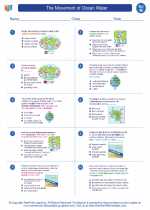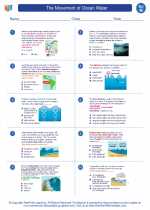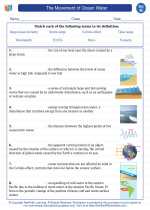Arctic Ocean
The Arctic Ocean is the smallest and shallowest of the world's five major oceans. It is located mostly in the Arctic Circle and is surrounded by the landmasses of Eurasia, North America, Greenland, and several islands. The ocean is covered by sea ice throughout much of the year, and its climate and ecosystem are unique compared to other oceans.
Physical Characteristics
The Arctic Ocean covers an area of about 14 million square kilometers and has an average depth of 1,038 meters. It is largely covered by sea ice, particularly in the winter months, and the ice cover fluctuates throughout the year. The ocean is relatively shallow compared to other oceans, with the Eurasian Basin and Canadian Basin being the deepest parts.
Climate and Ecosystem
The Arctic Ocean has a polar climate, characterized by cold temperatures and a short summer season. The presence of sea ice has a significant impact on the climate and ecosystem of the region. The ocean is home to a variety of species, including polar bears, seals, whales, and a diverse range of marine life. The melting of sea ice due to climate change is also affecting the ecosystem and the livelihoods of indigenous communities in the region.
Importance and Human Impact
The Arctic Ocean plays a crucial role in regulating the Earth's climate and is of strategic importance for shipping, fishing, and resource exploration. Human activities, such as oil and gas extraction, shipping, and pollution, have raised concerns about the environmental impact on the Arctic Ocean and its delicate ecosystem.
Study Guide
- What are the physical characteristics of the Arctic Ocean?
- How does the presence of sea ice impact the climate and ecosystem of the Arctic Ocean?
- Why is the Arctic Ocean important, and what are the potential human impacts on the region?
- Discuss the unique features of the Arctic Ocean's ecosystem and the species that inhabit the region.
- Explain the challenges and opportunities associated with human activities in the Arctic Ocean.
◂Science Worksheets and Study Guides Eighth Grade. The Movement of Ocean Water

 Worksheet/Answer key
Worksheet/Answer key
 Worksheet/Answer key
Worksheet/Answer key
 Worksheet/Answer key
Worksheet/Answer key
 Vocabulary/Answer key
Vocabulary/Answer key
 Vocabulary/Answer key
Vocabulary/Answer key
